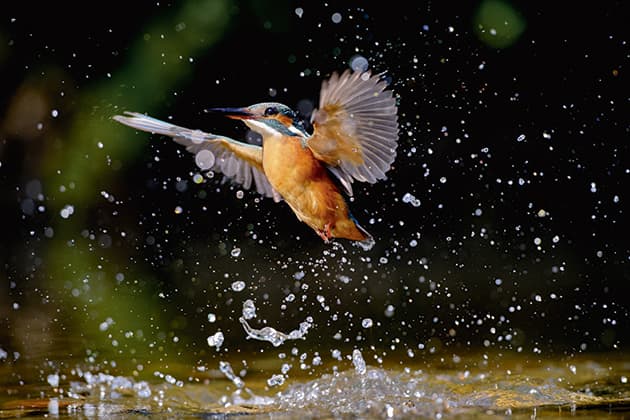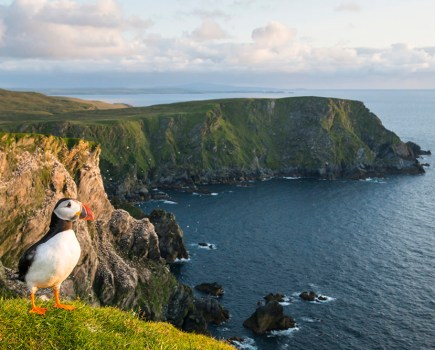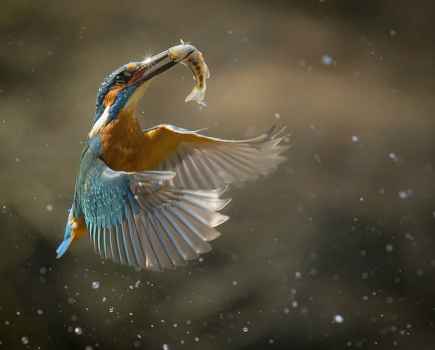About the kingfisher
The kingfisher is one of the UK’s most colourful birds and highly sought after by wildlife photographers.
- Location: Kingfishers can be found throughout the UK, albeit in fewer numbers in Scotland.
- Size: Adults are 17-19.5cm long, including their bill.
- Nest: Kingfishers like to nest in a burrow that they excavate from stone-free sandy soil along a riverbank – normally about 0.5m from the top.
- Diet: Mainly small fish.
- Population: There are approximately 3,800-4,500 pairs of kingfishers in the UK.
Kingfishers are small, plump, short-tailed birds with a very long bill that is used for catching fish. With their bright blue-and-orange plumage, they are unmistakable, but can be difficult to spot when perched motionless near water.
A kingfisher’s flight is fast, and often very low over water. They search for small fish from waterside perches and can occasionally be seen hovering above the water’s surface before diving. They mainly eat fish, chiefly minnows and sticklebacks, but will also feed on aquatic insects.
Kingfishers are fond of clean, slow- moving water, as well as canals and lakes. They can also be found around the coast, especially during cold winters.
Best time to shoot
The best time to photograph kingfishers is during the summer months, especially in July when there can be a lot of activity round the nest. Kingfishers are protected at their nests and they should not be photographed there unless a licence has first been obtained.
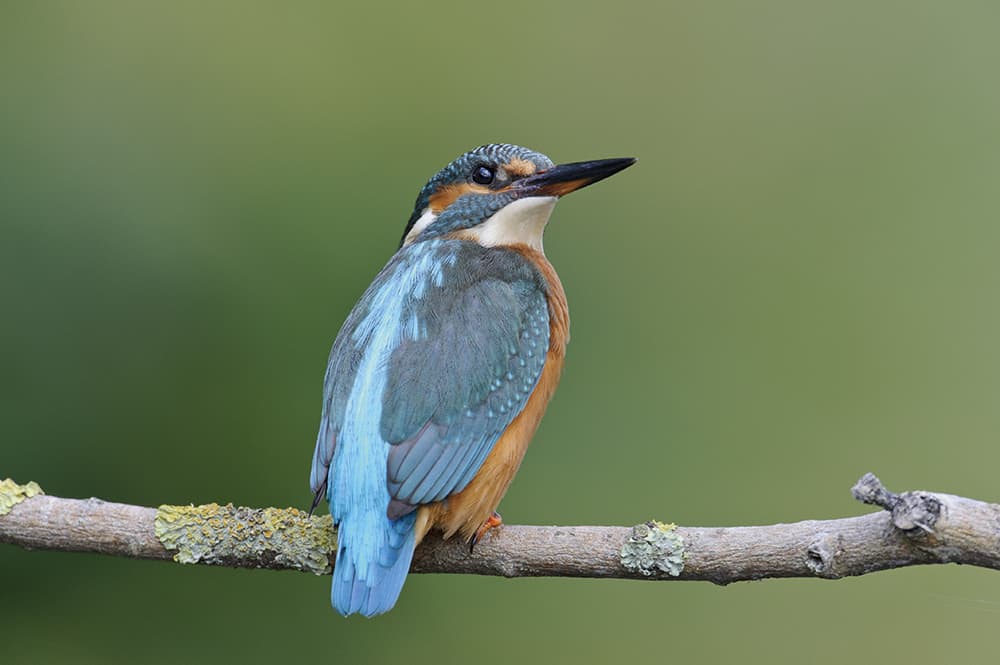
Try to vary the position of perches so you get different backgrounds
Nature reserves
There are numerous nature reserves where kingfishers can be seen and photographed, typically from hides set up for birdwatching. At some hides, local photographers have set up perches to attract these birds. However, at most hides, they can only be photographed from a distance, necessitating the use of extreme focal lengths and/or cropping.
Private land
I have been fortunate enough to photograph kingfishers on a quiet stretch of river near my house, which the landowner kindly gave me access to. I was able to set up a canvas hide and perches on an area of the river where I had already seen the birds fishing. By using a canvas hide (a bag hide will also work for short sessions), I have photographed resident kingfishers at very close distances and with a relatively short focal length.
Perches
When photographing kingfishers, try to vary the perches used and their locations. Consider the direction of the light and experiment with backlighting. An old fishing rod makes for a great perch, as do signs stating ‘No fishing’. As well as working on portraits with a kingfisher against a clean background, experiment with a remote camera and wideangle lens for images showing the birds in their environment.
Diving and fishing
The hardest images to capture are those of a kingfisher diving for fish, but it’s very rewarding when you succeed. If you are short on time, some photographers offer hide rental and/or workshops at sites they have set up specifically for images of kingfishers fishing. Be aware, though, that your pictures may be indistinguishable from those of other photographers who have visited the same sites.
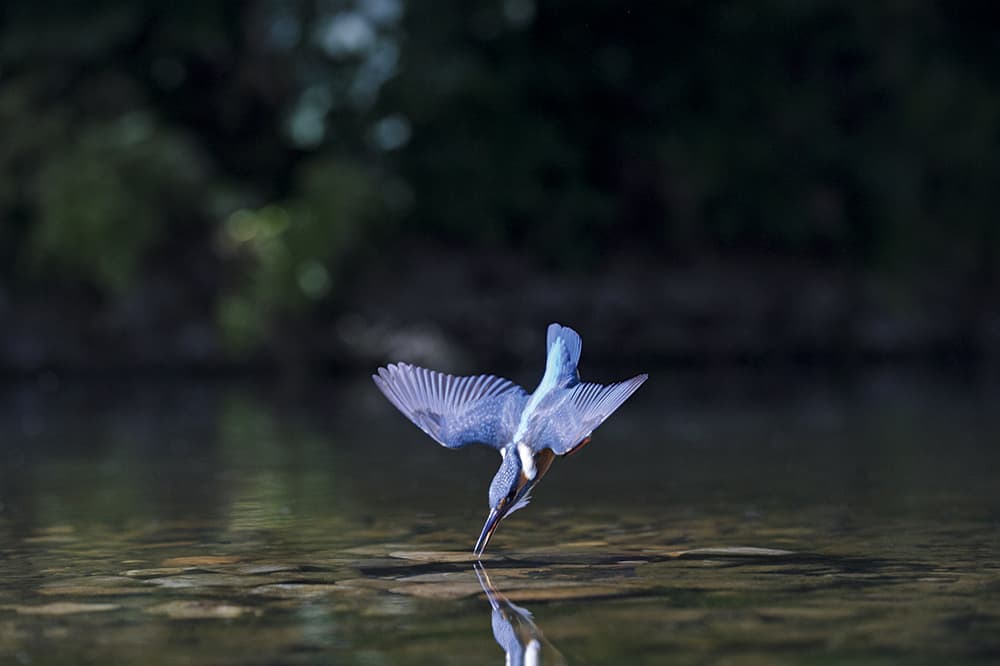
Photographs of kingfishers diving for fish aren’t easy to capture, but are very rewarding when you do
Kit list
C30.1 Portable Dome Hide
A portable fabric hide, such as this dome version from Wildlife Watching Supplies, will allow you to shoot kingfishers from a relatively close distance. As you might be spending long periods of time in them, a comfortable camping chair together with drinks and snacks is a must.
C14 Camera Double Bean Bag
As space is often at a premium in hides on nature reserves, a beanbag, such as this one from Wildlife Watching Supplies, will provide a stable support and let you shoot without taking up any more room than other visitors.
Andrew Mason is a full-time professional nature photographer. His work is widely published and has been used in books, magazines and calendars and by corporate and government clients, among others. His website is www.andrewmasonphotography.co.uk

